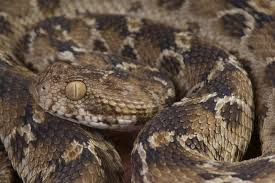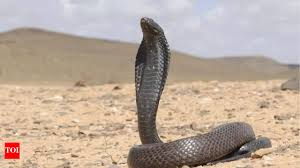Now Reading: Dangerous Desert Snakes of UAE You Should Know About Today 2025!
-
01
Dangerous Desert Snakes of UAE You Should Know About Today 2025!
Dangerous Desert Snakes of UAE You Should Know About Today 2025!

Table of Contents
The United Arab Emirates (UAE) is famous for its tall skyscrapers, golden sand dunes, and luxury living. But far away from the glamour of Dubai and Abu Dhabi lies a mysterious world — the vast Arabian Desert, home to some of the most fascinating and deadly desert snakes.
These silent reptiles play an important role in the desert ecosystem. But for travelers, campers, and locals who spend time outdoors, it’s important to know about these snakes — how to spot them, stay safe, and even appreciate their surprising beauty.
In this article, we explore the types of desert snakes in UAE, why they matter, and how you can avoid trouble when venturing into the desert.
1. The Snake Life of the Arabian Desert

The deserts of the UAE are filled with life — despite the extreme heat and dry conditions. Among the creatures that survive here are snakes that have adapted perfectly to the sand, wind, and sun.
These snakes are not commonly seen because they are shy, quiet, and usually come out at night (nocturnal). They are not interested in humans, and most bites happen when snakes are accidentally stepped on or disturbed.
2. Common Types of Desert Snakes in the UAE

Here are some of the most well-known snakes you might find in the UAE deserts:
a) The Horned Viper (Cerastes cerastes)
Also called the Saharan Horned Viper, this snake is famous for its two horn-like scales above its eyes. Its sandy color allows it to blend into the desert perfectly, making it hard to see.
- Length: Up to 85 cm
- Venom: Dangerous but rarely fatal to humans
- Behavior: Hides under sand during the day; hunts small animals at night
b) The Arabian Sand Boa (Eryx jayakari)
This small, non-venomous snake is a desert dweller and loves to burrow under the sand. It’s often called a ‘harmless hunter’ because it feeds on lizards and rodents.
- Length: 40–60 cm
- Venom: Non-venomous
- Behavior: Completely harmless to humans
c) The Saw-Scaled Viper (Echis carinatus)
One of the most dangerous snakes in the region, the Saw-Scaled Viper is small but very aggressive when threatened.
- Length: 30–90 cm
- Venom: Highly venomous, can be deadly if untreated
- Behavior: Hisses loudly and rubs its scales to create a warning sound
d) Desert Racer Snake (Coluber schmidti)
This fast-moving, non-venomous snake is famous for its incredible speed and hunting skills.
- Length: Up to 1.5 meters
- Venom: Non-venomous
- Behavior: Active during the day; harmless to humans
3. Are These Desert Snakes Dangerous to Humans?
Many people fear snakes, but the truth is that snake bites are very rare in the UAE, especially for tourists who stay in cities and resorts. Most snakes in the desert will not attack unless they feel threatened or cornered.
According to the UAE Ministry of Climate Change and Environment, snake encounters are uncommon and serious snakebites are extremely rare thanks to public awareness and desert safety guidelines.
But it is always wise to stay cautious when hiking, camping, or traveling in desert areas.
4. How to Stay Safe from Desert Snakes
If you are visiting or living near the desert, here are simple but important tips to stay safe:
- Wear boots and long pants when walking in the desert.
- Do not walk in the desert at night without proper lighting.
- Shake out shoes, bags, and blankets before use.
- Avoid putting your hands or feet in holes or cracks.
- If you see a snake, stay calm, back away slowly, and do not try to touch it.
In case of a snakebite:
- Call 999 (UAE emergency number) immediately.
- Stay still to prevent the spread of venom.
- Do not cut the wound or try to suck out venom — this is dangerous.
- Get to a hospital quickly for treatment.
5. Why Desert Snakes Are Important for the Environment
While snakes may seem scary, they are actually very helpful to the desert environment. They control the population of rats, mice, and insects — keeping the desert balanced and healthy.
Without these reptiles, the number of pests would rise quickly, causing damage to crops and spreading disease. Snakes are nature’s pest controllers and are important for the desert’s survival.
6. Desert Snake Conservation in the UAE
The UAE government and wildlife organizations are working hard to protect desert species, including snakes. Killing or capturing wild snakes is illegal in many areas without a special permit.
The Sharjah Desert Park and the Dubai Desert Conservation Reserve educate visitors on the importance of desert animals, including snakes. These programs teach both locals and tourists how to respect and live safely alongside desert wildlife.
7. Final Thoughts: Should You Fear Desert Snakes in UAE?
While desert snakes sound dangerous, the truth is that they do not pose a serious threat to humans if left alone. Knowing about these creatures — where they live, how they behave, and what to do if you see one — can make your desert experience in the UAE safe and enjoyable.
So next time you travel across the golden dunes of the Emirates, remember: the desert is full of life, and with respect and care, you can safely share the sands with its hidden residents.
Read More:- Shobha Realty Launches Its Most Luxurious Project Yet—Full Details Inside 2025





















